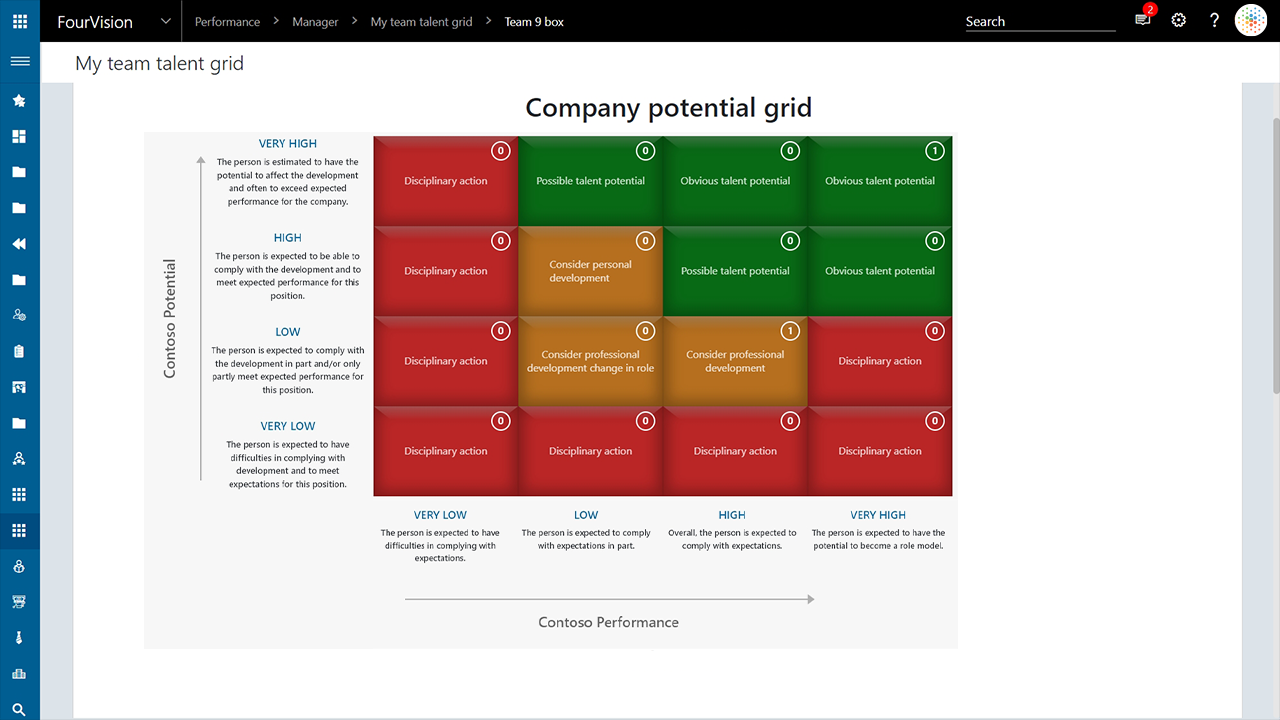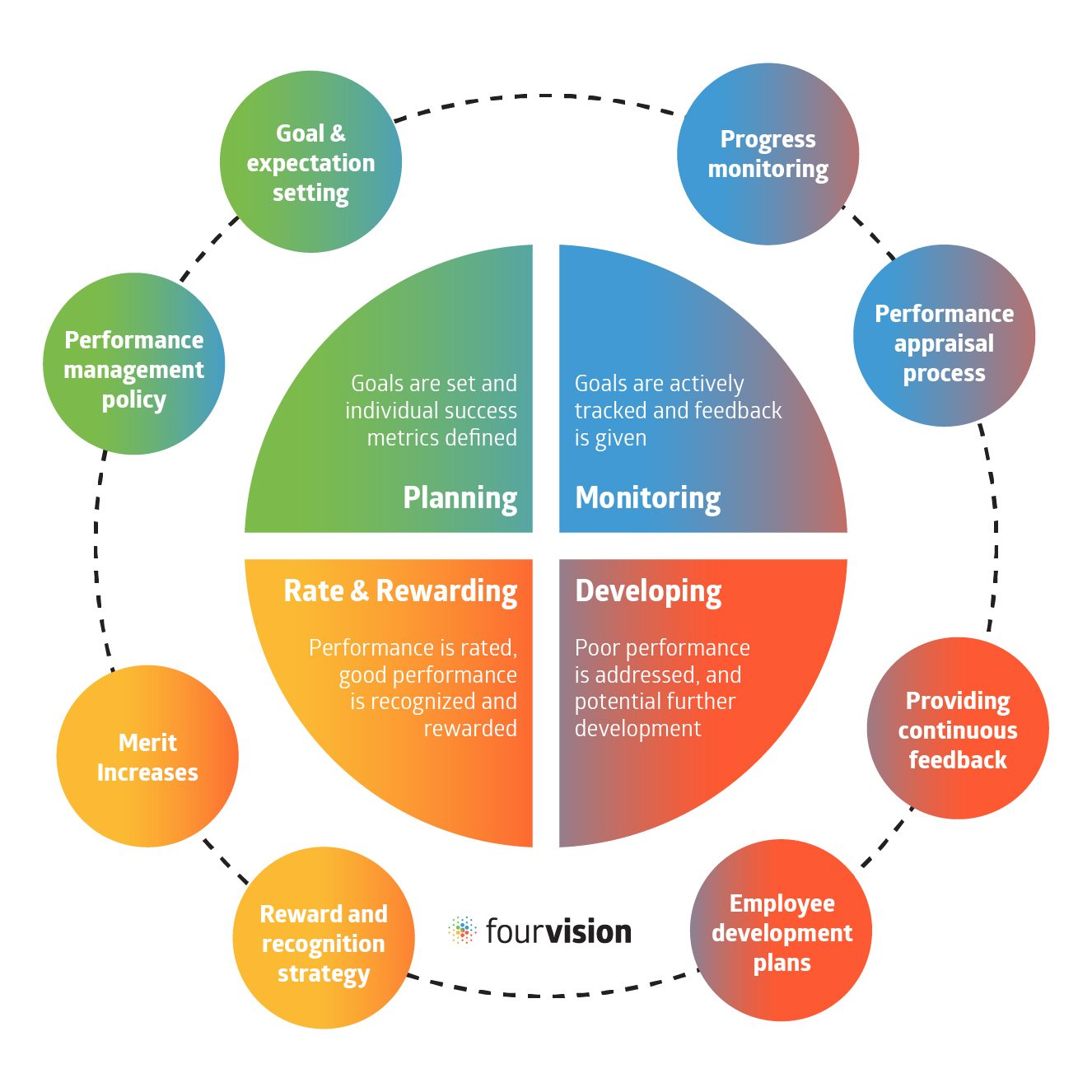The dynamics of talent development (no pun intended) have evolved significantly over the years. Personnel shortages forced many companies to make due with the personnel they have, and remote or hybrid working has made it challenging to keep track of your talent development initiatives.
At FourVision, we have witnessed these challenges first-hand, both with large and small organizations. Although talent development strategies differ greatly for each, we can tell you how to employ the right tools to accompany your talent development strategy.
What is Talent Development and how do I make an effective strategy?
Not to be confused with Talent Management (although they are similar), Talent Development is an organizational process that attempts to manage business outcomes by leveraging employees’ existing knowledge and abilities, while enabling continuous learning and career advancement.
As for creating a talent development strategy, this highly depends on your company’s layout and objectives. Since this guide focuses on employing the right talent development tools, we recommend Tess C. Taylor from AIHR’s “talent development 101” guide to aid in your strategy, which goes into great detail.
How does Microsoft Dynamics 365 support Talent Development?
Microsoft Dynamics 365 for Human Resources offers a strong foundation for your Talent Development initiatives. Combined with FourVision’s extended features, Dynamics 365 supports the full range of talent development features:
- Skills management and goalsetting – to align individual and business objectives.
- Learning Management – to manage employees’ knowledge, upskilling, and reskilling.
- Professional Development Plans – to continuously stimulate growth.
- Succession planning – to identify skill gaps and high-potential employees.
- Performance management – to monitor progress, provide feedback, and reward employees.
Skills Management and goalsetting
Only when employees have a clear understanding of their role and responsibilities (i.e. the organization’s expectations), you can align employee’s efforts with desired business outcomes.
In fact, defining clear positions and roles within departments is a prerequisite for effective performance management. In our article: “Positions, Jobs, and Roles decoded”, we explain how Dynamics 365 HR’s organization management is the foundation for your entire HR process, and logically also your talent development strategy.
Keeping this in mind, we can move on to skills management and goalsetting. Skills management serves several purposes, including:
- Identifying strengths, weaknesses, and skill gaps.
- Planning career paths and personalized training plans.
- Strategic workforce planning, recruitment, and hiring.
- Performance appraisals
- Resource planning and project planning
Microsoft offers several solutions to choose from. Some skills management features are available in Dynamics 365 HR, goalsetting in Viva Goals, and resource planning in Project Operations.
Performance Management for Dynamics 365 enables you to manage the full skills management and goalsetting capabilities. Visualizing both required and actual skills in an easy-to-read chart, making it easy to identify potential skill gaps at a glance and take immediate action.
Learning management
Learning is another crucial process within talent development. When done right, learning management can become the catalyst for continuous and efficient employee growth, or as we like to call it: learning in the flow of work.
Tools like Microsoft Viva Learning act like a catalogue of courses, while a fully fledged learning management system like LMS365 offer the functionality to build and distribute courses and e-learning programs. Both are accessible via Microsoft Teams.
While it is easy to shove learning management under a Learning & Development department, it is important to align it with the broader Talent Development strategy. By embedding your learning management into your performance management strategy, you can create a more holistic employee experience. For more context, refer to our article: Why it’s time to integrate Learning Management into your Performance Management strategy.
Professional Development Plans
While skills management and goalsetting contribute to organizational goals, professional development plans (PDP) are meant to advance employees’ careers.
Career development plans (CDP) contain professional goals and specific actions on how to reach those. Performance Management for Microsoft Dynamics 365 enables you to focus on measurable outcomes, from setting SMART goals or OKRs, to conducting Performance Development Reviews (PDR):
Our tool enables you to create professional development plans on Dynamics 365. Allowing line managers to manage performance assessments, employees to gain insight in their progress, and HR to oversee the whole performance management process.
Succession Planning
Being a practice that deals with the sustainability of your workforce, succession planning is all about ensuring seamless transitions between leadership roles – or rather developing your talent.
Skills management is essential to this, as you will use skills to create skills matrices – which in turn are used to identify high- and low-potential employees, and employees with a high- or low risk of leaving. Succession Planning for Dynamics 365 allows you to choose between the 9- and 16 box talent matrix, depending on your organization’s preferences.
Leadership continuity planning essentially creates a pipeline of skilled leaders who can seamlessly step into key roles, contributing to the long-term success of the organization.

Performance management
Any talent development strategy is not complete without performance management. This is where skills, goalsetting, and professional development plans come together.
But to truly make an impact on business outcomes, you will want to create a feedback-rich environment and create incentives for employees to perform better.
This is where Performance Management comes in. With the 360° feedback feature, you can enable managers to facilitate a feedback loop between them and their teams. These template-based questionnaires simplify the process, with real-time tracking and options for anonymous feedback.
Last but not least, there is possibly the best motivator within talent development: performance-based salary increases and bonuses – also known as merit (increase). This means that next to your annual increment, employees can be rewarded based on their performance scores.
While Microsoft Dynamics 365 offers flat salary increases out-of-the-box, we offer advanced rewards management via the Merit Increase module in the Performance Management app.

Improve your talent development strategy with Microsoft tech and FourVision
FourVision has extensive HRM expertise as Microsoft’s largest partner specializing in Dynamics 365 for over 15 years. We build End-to-End HR solutions, extending the native capabilities of Microsoft Dynamics 365 for Human Resources. Schedule a call to see how we can do it for you!




